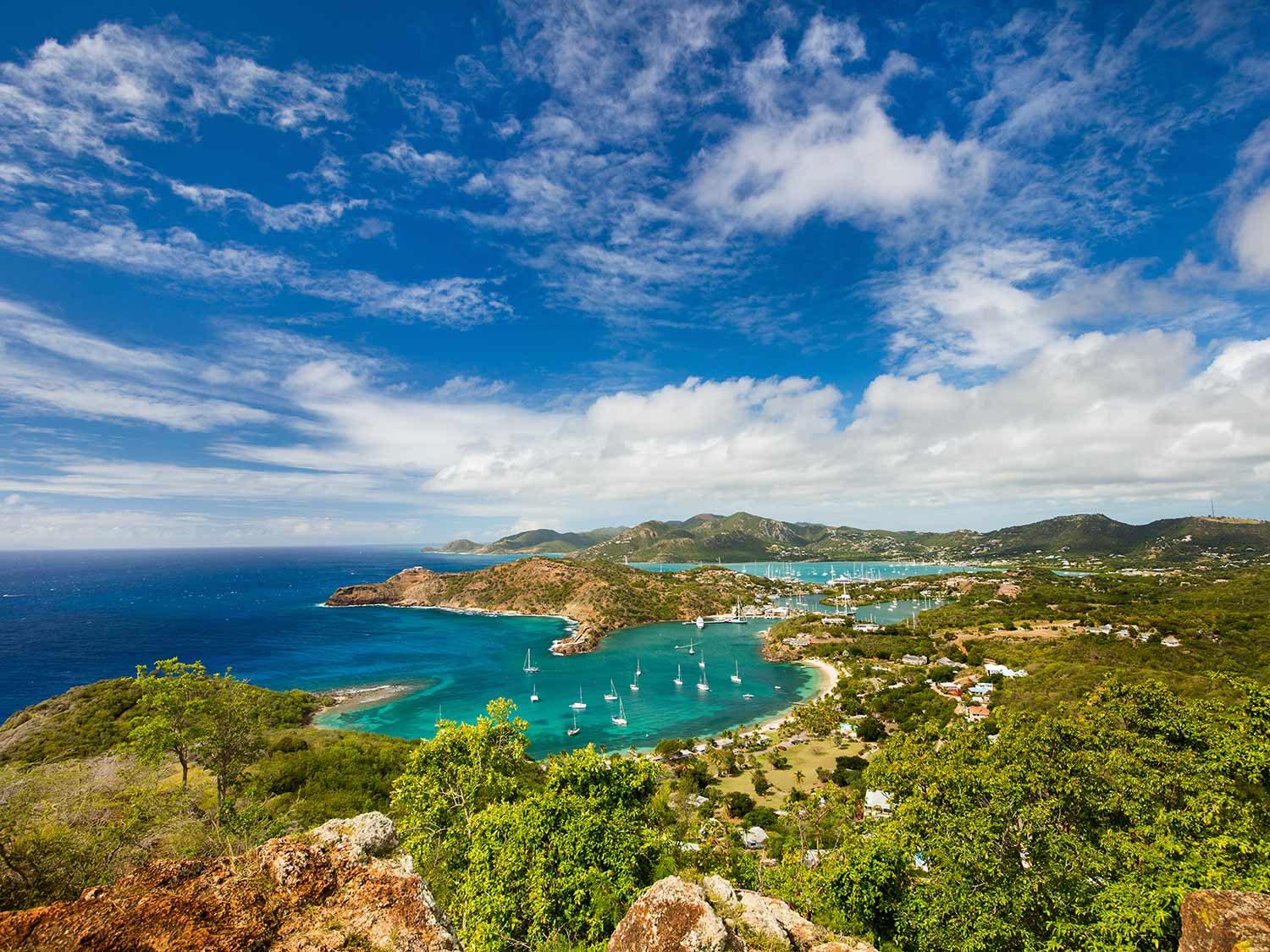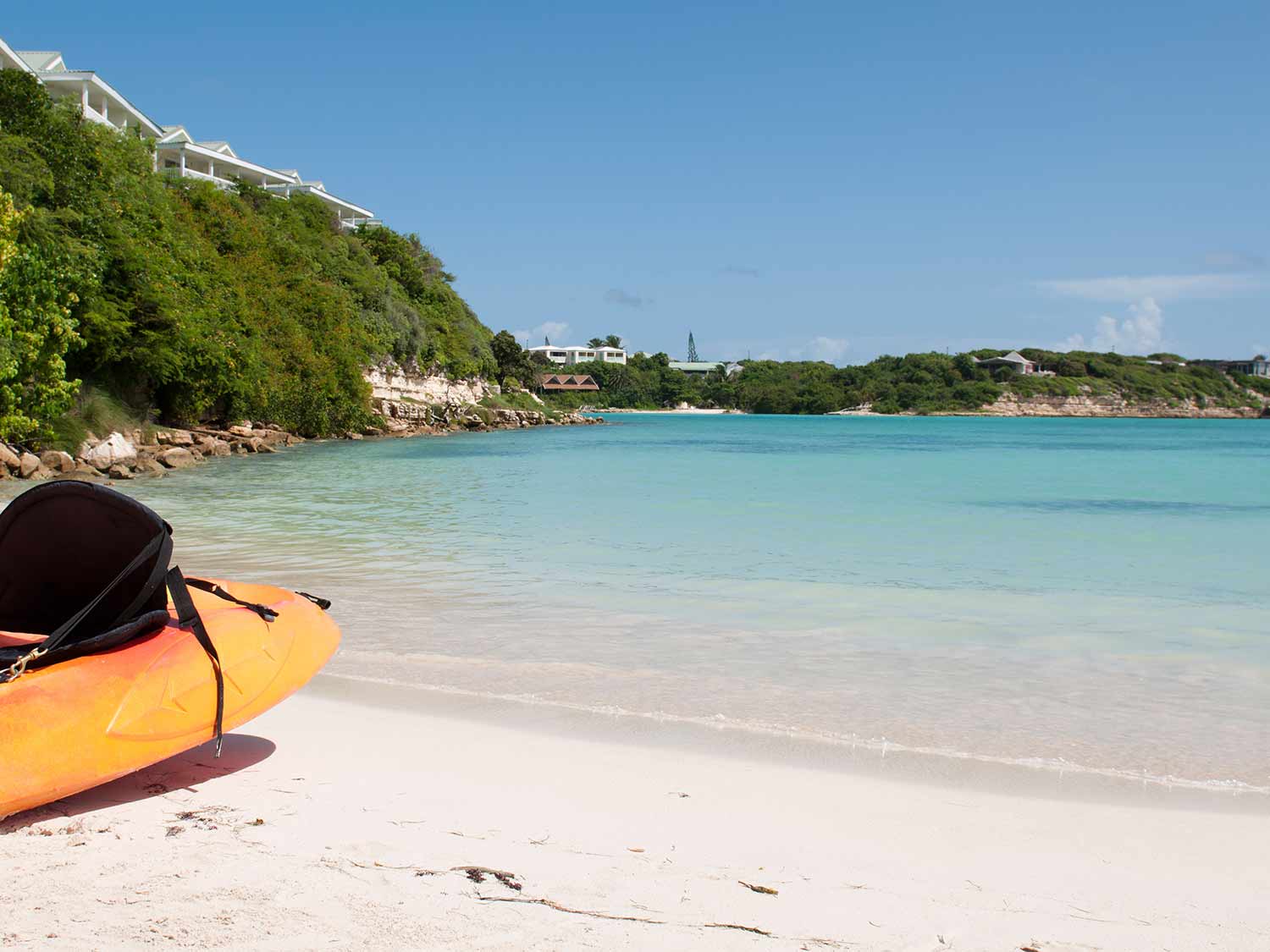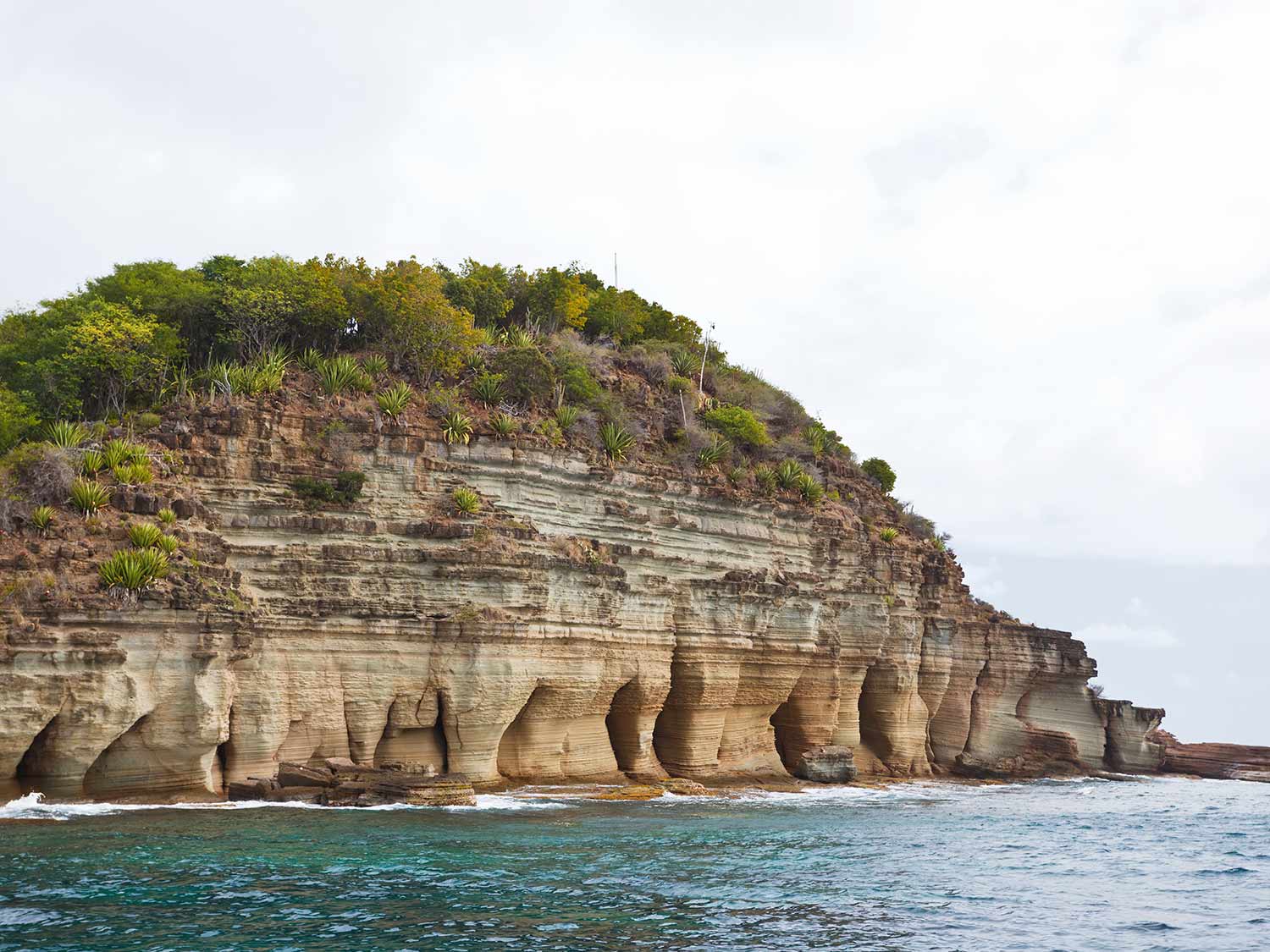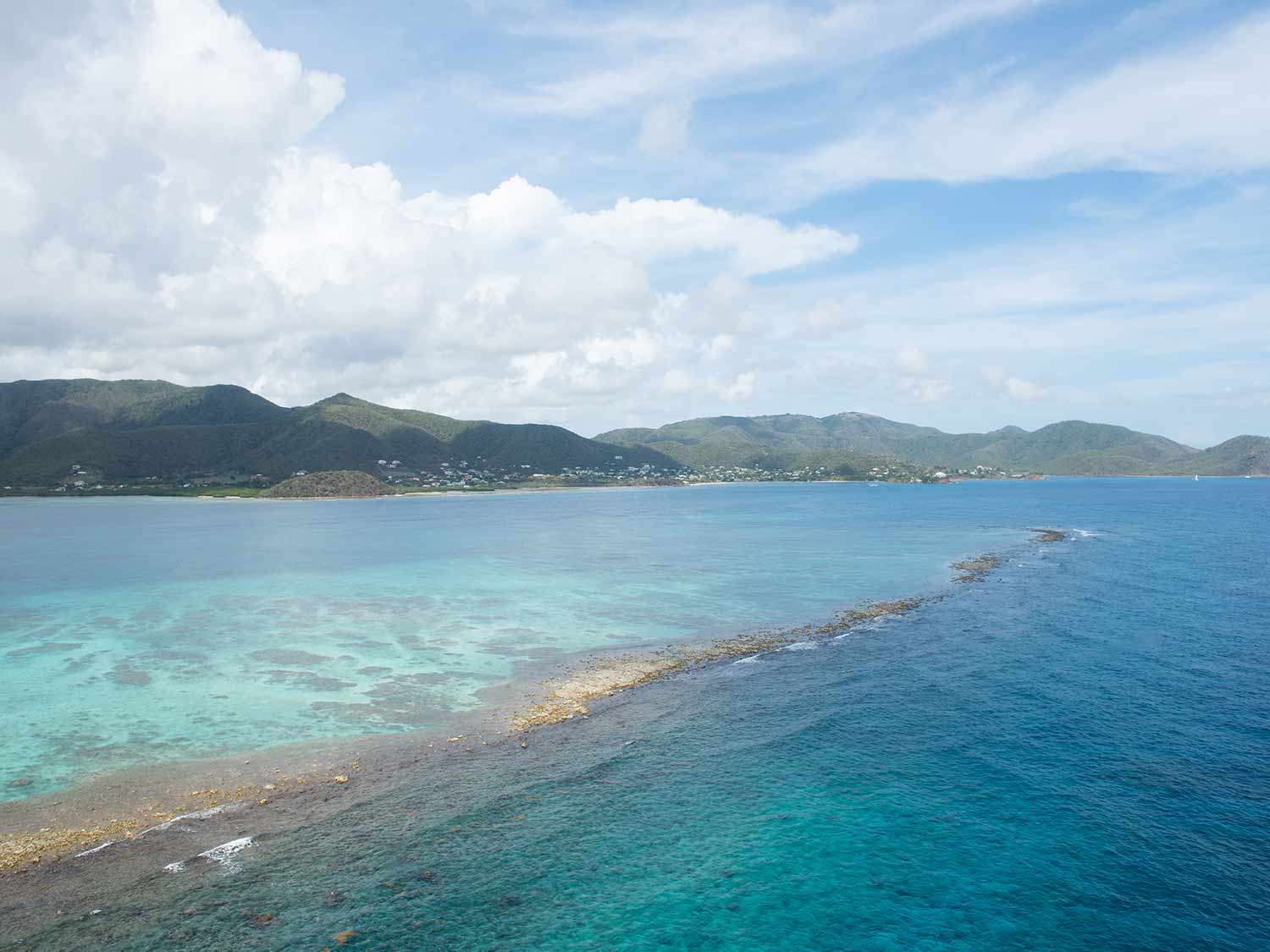Best Snorkeling Spots In Antigua
Barrier reefs, wrecks and patches of coral make this Caribbean island ideal for beginner and advanced snorkelers alike.
Antigua is known for its ample beaches—366 to be exact, now that Hammock Bay Cove has added a new one since its inception. Yes, the sand is great for sunning, but we love how many of these beaches open to snorkel sites alive with corals, sea fans, schools of fish and myriad marine life. Plus, unlike many other islands, Antigua offers snorkeling off nearly every coast. Want to know more? Read on.
English Harbor Wreck
Not many locals know that a small wreck sits in 15 feet of sand just 10 yards from the eastern shore of Galleon Beach. It's easy to find thanks to three buoys set in a triangle. The wreck, an old English life boat named the Sea Terror, is now home to a half dozen queen angelfish, a species notable for the flashes of iridescent cobalt along the edges of their bodies. You can also find peacock flounders, a fish that lies flat on the sand, its two eyes staring up from one side of its body.
Peer inside the small wreck to see schools of grunts and other fish. Note that this is a great site for kids thanks to the amount of marine life, and the way that a shipwreck stirs the imagination.
Bird Island
Antigua is home to 366 beaches, but not all of them are on the mainland. Some are found off satellite spits of land, such as Bird Island, found off the northeastern coast and reachable via day trip—and, not to be confused with Great Bird Island. Here, sightings of gray reef sharks and nurse sharks are common among the large schools of fish.
Long Bay
This white sand beach, home to Pineapple Beach Club resort, has some of the best snorkeling on the east side of Antigua. Swim out just past where the motorboats are tied up to find rope sponges, vase sponges and eel grass. Among it all, you'll find schools of pale purple surgeonfish and French grunts, as well as blue head wrasse and parrotfish.
Green Island
This snorkel spot is prized as much for its calm waters as for its healthy reefs. Local operators including Tropical Adventures offer the 6-hour tour a couple times each week. It's a great pick for kids thanks to shallow water and the white-sand beaches of the island, which allow for easy entry. We love that this site is a favorite of green turtles, which don't shy from guests.
Stingray City
Ask the tour guides how many stingrays you might meet on this snorkel tour, and they joke that the number varies because the animals multiply every day. In truth, it's fair to expect between half and a full dozen or more at this waist-high, sandy bottom site. We like how beginner friendly the experience is, with a floating wooden platform with stairs that lead into the water.
There is no age limit to the tour, so even babies can get wet, too, if mom or dad approves. In the water, you have the option of feeding them yourself, offering bits of squid to their vacuum-like mouths. Or simply enjoy as the guide proffers food to the rays, holding onto the meat long enough to lure the soft rays up and along willing guests' arms and heads.
Pillars of Hercules
Snorkel day-trip boats favor this shallow site in English Harbour, but you can also reach it on foot if you're willing to walk the full crescent of Galleon Beach. Here, you can find loads of big marine life, from green sea turtles so large that remoras hitchhike on their backs to Southern stingrays nearly as big as your arm span.
If you're a keen spotter, you may also spy a lobster, octopus or eel. Do keep in mind, however, that this Atlantic-facing site isn't home to the typical coral reefs of the Caribbean. Rather, this area is strewn with rocks and boulders now covered in coral. Equally pretty—just a different kind of beauty.
Deep Bay
Found off the west coast of Antigua, a 23-minute drive from the city of St. John's, this cove is another site where you can snorkel a wreck. This three-masted sailing barque named The Andes was built in 1874 and sunk in 1905 in 35 feet of water. Thanks to such clear water, it's easy to view the wreck from the surface. Snorkelers need not even dive down to see its entirety, now largely covered in sponges and soft corals. Fish life varies from striped sergeant majors to trumpetfish, angelfish to pufferfish.
Prickly Pear Island
Another day trip site reachable by boat, this uninhabited island offers snorkelers patch reef just 20 yards from shore. The white-sand beach opens to a wide, shallow sandbar. From here, it's easy to start swimming to explore among coral heads and waving sea fans. Even on a day when cruise-ship excursion companies bring guests, it's easy to spread out and feel like the only person for miles as you come face to face with angelfish, French grunts and blue head wrasse.
Cades Reef
Off the southwestern stretch of Antigua, Cades Reef is best for experienced snorkelers. There is no island or beach here. Rather, it's an open-ocean site where day boats moor up along the 3-mile long barrier reef. Here, you'll find healthy elk horn coral, a rare species whose reddish tan branches resemble, well, antlers. Flitting among the corals are schools of bright blue Creole wrasse, yellow French grunts, black durgon fish and dozens of other species.
Paradise Reef
On the northwest side of Antigua, just north of Dickenson Bay, this site delivers some of the best snorkeling on island. Schools of Creole wrasse, Bermuda chubs, needlefish and yellowtail snapper commonly swarm guests. We'e partial to the site as it's another place where the elkhorn and other corals are still thriving.



